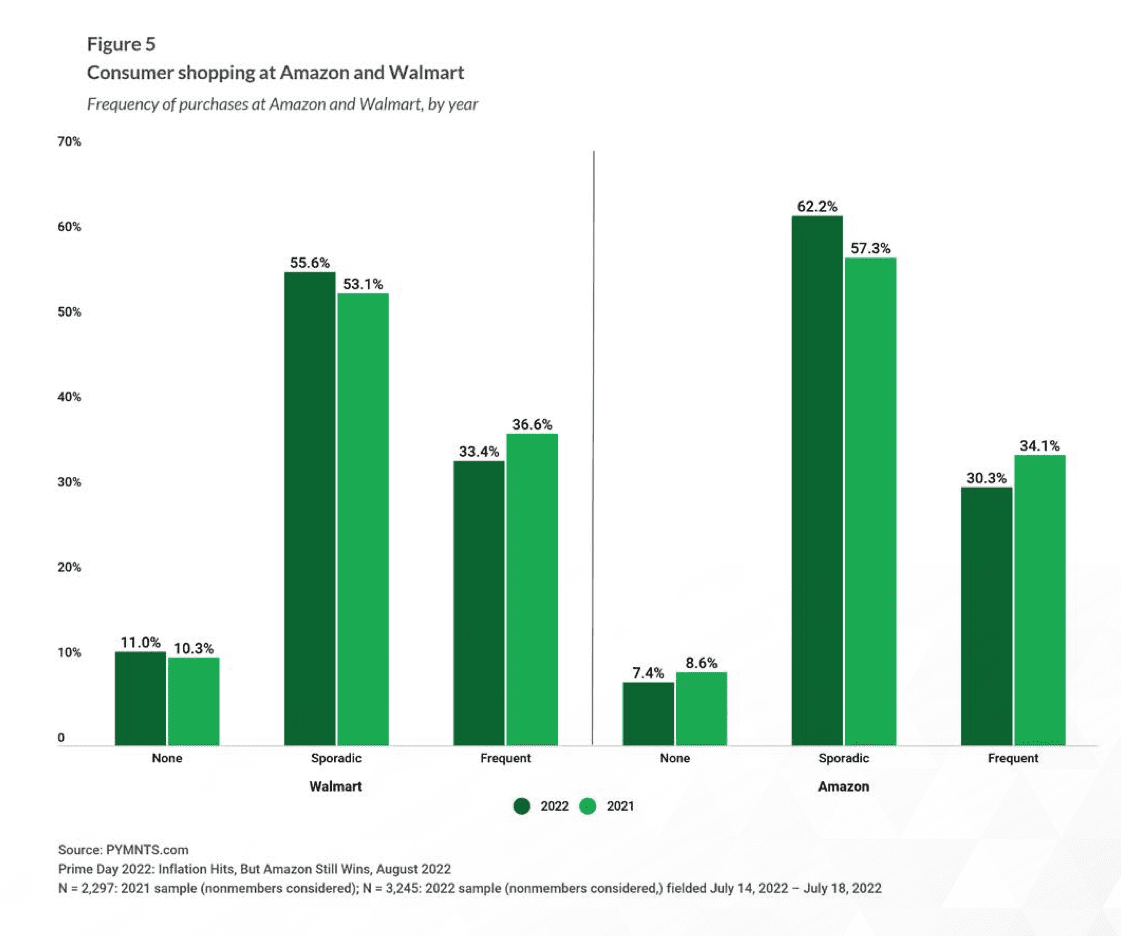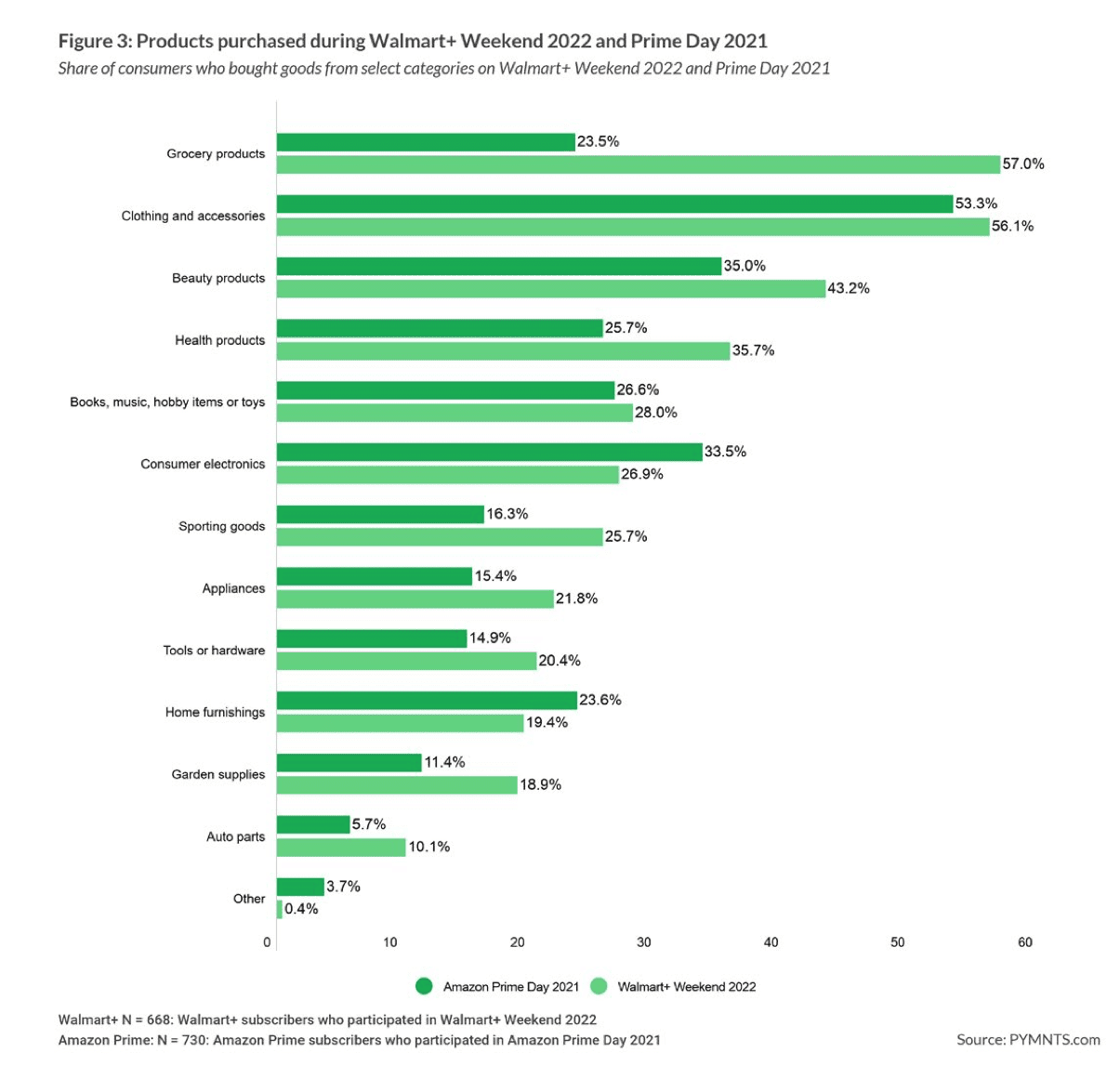
In some ways, Walmart’s upcoming second-quarter earnings report is like waiting for a slow-moving hurricane to make landfall, with the main question being not if there will be damage, but rather, how bad it will be.
While much has changed in the three months since the nation’s largest operator of physical retail stores last reported Q1 results that were largely focused on the changing buying habits of increasingly cash-strapped consumers, its cautious commentary and outlook reduction in late July have prepared storm-watchers for hunker down.
“The increasing levels of food and fuel inflation are affecting how customers spend, and while we’ve made good progress clearing hardline categories, apparel in Walmart U.S. is requiring more markdown dollars,” Walmart CEO Doug McMillon said at the time, pointing to the likelihood of additional pressure in the second half of the year.
To say the market has taken notice would be an understatement as shares of Walmart are down 10% in the past three months, compared to a 6% gain for the S&P 500 and a 25% advance by rival Amazon.
What has not been reflected and digested already is how the 25% decrease in the average price of a gallon of gasoline since the mid-June peak has impacted the minds and spending of the 150 million consumers that enter its 4,700 U.S. stores each week.
That fact alone, makes Walmart’s Tuesday (Aug. 16) morning earnings release conference call the equivalent of “Must See TV” and the critical insights this economic bellwether will provide on the state of the consumer and the broader economy.
Other Clues
As the business world awaits those results, there are other clues to be found in how the retail giant and eCommerce rival Amazon are faring in this climate thanks to a pair of PYMNTS reports analyzing the relative strengths and weaknesses of the two titans.
Prior to its July 25 profit warning, the “Walmart+ Weekend” event and competing Amazon Prime Day had already occurred, giving industry watchers a fresh chance to contrast and compare the customer habits at each player.
At an estimated 51 million members, Walmart+ membership is roughly one-fourth the size of Amazon Prime membership of more than 200 million members, and while there’s plenty of overlap in the purchasing habits within both groups, key differences remain.
Overall, Prime Day 2022 outperformed the first-ever Walmart+ Weekend event. According to the new PYMNTS report “Prime Day 2022: Inflation Hits, But Amazon Still Wins” 56% of Prime members made purchases during the July sales event compared to Walmart, which saw 24% fewer Walmart+ members take part this year compared to its 2021 Deal Days summer sale.
Get the report: Prime Day 2022: Inflation Hits, But Amazon Still Wins
To rally consumers and move out overstocks, Walmart held its inaugural Walmart+ Weekend sale in June — a broadside to beat Amazon Prime Day in July — and in the report “Walmart+ Weekend: Prime Day Rival Or Trip To The Grocery Store” the big clue is in the title, as Walmart Weekend participants loaded up on groceries and essentials.
“Walmart’s function as an online grocery store came even more into the spotlight on Walmart+ Weekend,” the study states, as 57% of Walmart+ subscribers who shopped during the flagship event purchased grocery products, versus just 24% of Prime members who did so during Prime Day 2021.”
 Two Approaches on Paycheck-to-Paycheck Living
Two Approaches on Paycheck-to-Paycheck Living
Our Prime Day 2022 summary found that “only 23% of Prime Day shoppers bought groceries — roughly half the 45% rate of their Walmart+ Weekend counterparts. Conversely, shoppers buying electronics were more apt to do so on Prime Day (31%) over Walmart+ Weekend (24%).”
Get the report: Walmart+ Weekend: Prime Rival Or Trip To The Grocery Store?
The spending behavior of consumers living paycheck-to-paycheck along a continuum from struggling to meet bills and not struggling is a revealing comparison between the two.
Our Walmart+ Weekend report notes that “among respondents subscribed to both Amazon Prime and Walmart+, those who are the most cash-strapped preferred Walmart+ Weekend 2022 over Prime Day 2021. Just under half of subscribers living paycheck to paycheck who also face challenges paying bills stated that Walmart+ Weekend 2022 offered better deals, versus just 29% for Prime Day 2021.”
 Meanwhile, the Prime Day report found that Prime members who live paycheck to paycheck and struggle to make ends meet increased Prime Day spending as median receipts rose $48 year over year, but with more deal-seeking this year as “Prime members who live paycheck to paycheck and face challenges paying their bills increased their median spending by 28%, rising from $174 in 2021 to $222 in 2022, as inflation likely pushed them to bring forward spending to secure savings.”
Meanwhile, the Prime Day report found that Prime members who live paycheck to paycheck and struggle to make ends meet increased Prime Day spending as median receipts rose $48 year over year, but with more deal-seeking this year as “Prime members who live paycheck to paycheck and face challenges paying their bills increased their median spending by 28%, rising from $174 in 2021 to $222 in 2022, as inflation likely pushed them to bring forward spending to secure savings.”
Despite Amazon’s better showing, our Prime Day analysis notes that “the share of consumers purchasing at least once per week from Amazon and Walmart slipped 3.8% and 3.2%, respectively. This includes Prime and Walmart+ members as well as nonmembers.”
For all PYMNTS retail coverage, subscribe to the daily Retail Newsletter.